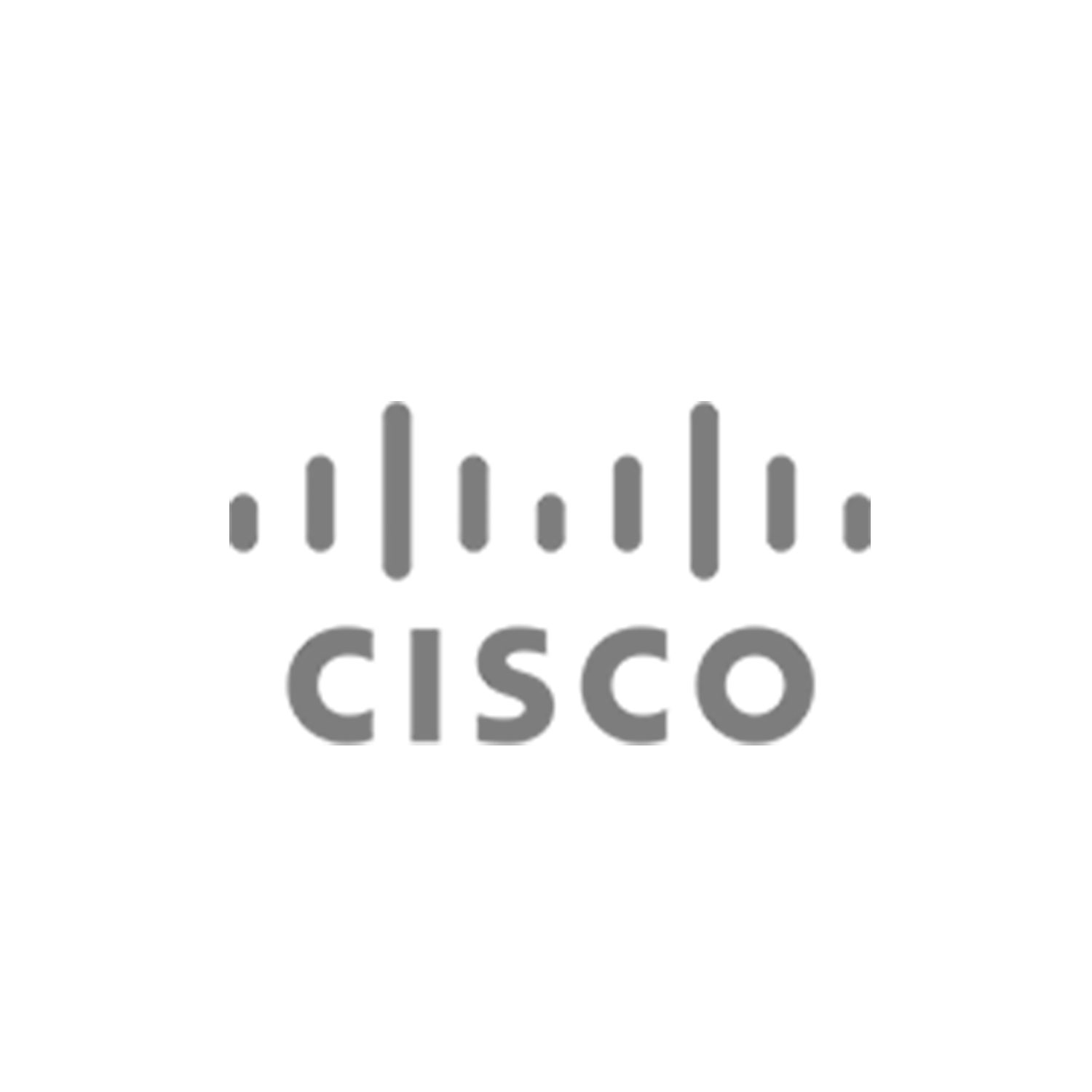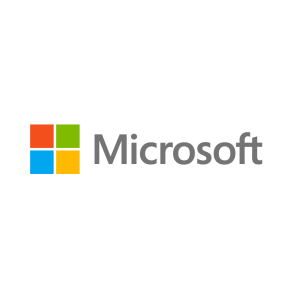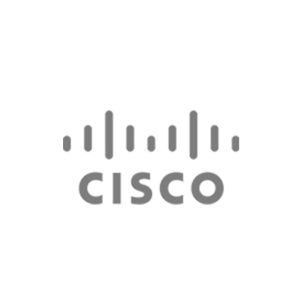Description
- Module 1: Cisco Unified CCX Product Overview
- Module 2: Cisco Unified CCX Installation and Configuration
- Module 3: Cisco Unified CCX Scripting
- Module 4: Cisco Unified CCX ACD Operations
- Module 5: Cisco Unified CCX Premium Functions
- Module 6: Cisco Unified CCX Maintenance
Who should attend
- Channel Partner/Reseller
- Customer
- Employee
Prerequisites
It is recommended, but not required, that students have basic knowledge of:
- Internetworking Fundamentals
- Basic IP Telephony Concepts
- Cisco Unified Communications Manager
- Cisco IP Phones
- Cisco IP Communicator
- Contact Center Operations
Course Objectives
Upon completion of the course, you will be able to:
- Provide a comprehensive overview of the Cisco Unified Contact Center Express product suite•
- Provide a complete description of the Cisco Unified CCX installation process, the configuration required with an overview of most common configuration web pages, and describe the call flow processes needed to establish a call on Cisco Unified CCX
- Describe the Cisco Unified CCX script editor, how it is installed and how to implement common IVR scripting techniques
- Provide a comprehensive view of Cisco Unified CCX ACD operations to include basic contact center build-up, scripting, agent and supervisor desktop configurations, advanced scripting topics, and reporting
- Describe how to install, configure and use features found in Cisco Unified CCX Premium such as, Outbound Dialer, Agent Email, Agent Web Chat, and Automatic Speech Recognition (ASR) and Text-to-Speech (TTS)
- Understand how to maintain and monitor a Cisco Unified CCX system
Outline: Unified Contact Center Express and Unified IP IVR Deployment (UCCXD)
Module 1: Cisco Unified Contact Center Express Product Overview
This module provides a comprehensive overview of the Cisco Unified CCX product suite. This overview will cover descriptions of the product, compatibility, and hardware and software options, architecture, and sizing and ordering tools. Upon completing this module, you will be able to identify and discuss the basic properties of Cisco Unified CCX.
Lesson 1: Cisco Unified Contact Center Express Product Packages
- Describe the four product packages available for the Cisco Unified CCX platform
- Define the primary functions of Cisco Unified CCX
- List the features of each product package
- List and define the add-on applications available with the Cisco Unified CCX Premium package
- List Cisco Unified Communications Manager Express deployment limitations
- List compatibility options for Cisco Unified CCX Version 8.0
- List the operating system options for various Cisco Unified CCX programs
- List available hardware platforms for Cisco Unified CCX
- List maximum capacities of Cisco Unified CCX
Lesson 2: Cisco Unified Contact Center Express Architecture
- List and describe the various applications in the Cisco Unified CCX environment
- Define the cluster components of Cisco Unified CCX
- Describe the Cisco Unified CCX datastores and the type of data they contain
- Describe the different integration models in which Cisco Unified CCX can be employed
Lesson 3: Cisco Unified Contact Center Express Design and Order Tools
- Define basic terms associated with sizing a call center
- Describe Erlang calculators
- Use IPC Resource Calculators to determine IVR and call center requirements
- Describe the Cisco Solution Expert
- List network considerations found in the SRND
Module 2: Installing and Configuring Cisco Unified Contact Center Express
This module provides a complete description of the Cisco Unified CCX installation process, the configuration required, with an overview of most common configuration web pages, and describes the call flow processes needed to establish a call on Cisco Unified CCX. Upon completing this module, you will be able to install and set up Cisco Unified CCX.
Lesson 1: Installing Cisco Unified Contact Center Express
- Describe the installation options available for Cisco Unified CCX
- Describe the licensing requirements for Cisco Unified CCX
- Summarize the order of installation and setup
- List the prerequisites for installation
- Describe the processes required to install a Cisco Unified CCX server
- Describe the processes required to set up and configure the first or single Cisco Unified CCX server
- Describe the processes required to install and set up the second Cisco Unified CCX server
- Describe the processes required to set up the Cisco Unified CCX server when using Cisco Unified Communications Manager Express
- Describe the contents and location of installation files
- Summarize requirements for upgrading Cisco Unified CCX
- Summarize the actions required to migrate to a virtual server
Lesson 2: Cisco Unified Contact Center Express Management
- Define and describe Cisco Unified Communications Manager configuration requirements
- Find and use Cisco Unified CCX Management web pages
- Locate and describe Cisco Unified CCX Subsystem properties
- Locate and describe the tools available under the Tools menu option such as User Management and Plug-ins
- Access and describe the features available on the Supervisor and User web pages
- Locate and know the configurable properties of the Cisco Desktop Work Flow Administrator
- Describe the configuration properties available in the Cisco Desktop Administrator
- Summarize Cisco Unified CCX Serviceability
- Summarize the Disaster Recovery System
- Summarize Cisco Unified OS Administration
- Summarize Cisco Unified Serviceability
- Summarize the Cisco Unified CCX Command Line Interface (CLI)
Lesson 3: Call Process and Basic Cisco Unified Contact Center Express Configuration
- Define terms associated with the call flow process
- Describe the call flow process
- Describe the basic configurations required to accept a call
- Describe Configuration Wizards
Module 3: Cisco Unified Contact Center Express Scripting
This module will provide you with the appropriate knowledge to install the script editor and implement common IVR scripting techniques. Upon completing this module, you will be able to install and use the Cisco Unified CCX Script Editor.
Lesson 1: Cisco Unified Contact Center Express Script Editor
- Describe how to install the script editor
- Describe how to access and use the script editor
- Describe the Palette, Design, Variable, and Message windows
- Describe variables, what they are used for, and how to create, edit, and delete them
- Describe the expression editor and its fundamental properties
- Illustrate the four steps of script management: Validate, Save, Upload, and Refresh
- Describe the basic properties of debugging
- Contrast reactive vs. nonreactive debugging
- Define debugging tools on the toolbar
- Describe how to start and view a debug session
Lesson 2: Creating a Basic IVR Script
- Describe how to start a blank script or a script from a template
- Describe the Start and End steps
- Describe the Accept and Terminate steps
- Describe the Annotate step
- Describe the Play Prompt step
- Describe the Get Call Contact Info step
- Describe the Delay step
Lesson 3: Prompting and Collecting Information
- Describe how to collect digits from a caller
- Describe how to present a menu to callers and branch script logic accordingly
- Describe how to obtain a recording from a caller
- Describe how to obtain a user object for dialing by name
- Describe how to set variable information
- Describe how to get contact information from the system
- Describe how to set contact information from the system
- Describe how to transfer a call
Lesson 4: Accessing an External Database
- Describe the architecture and supported databases for external database access
- Illustrate the processes for uploading the JDBC driver to access an external SQL Server database
- Describe how to set up the Database subsystem
- Describe the DB Read step
- Describe the DB Get step
- Describe the DB Write step
- Describe the DB Release step
Lesson 5: Loops, Counters, and Decision Making
- Describe the Label step
- Describe the Goto step
- Describe the Increment step
- Describe the Decrement step
- Describe the If step
- Describe the Switch step
Lesson 6: Confirming Caller Input
- Describe to use the Create Generated Prompt step
- Describe how to use the Implicit Confirmation step
- Describe how to use the Explicit Confirmation step
- Describe the Create Conditional Prompt step
- Describe how to use the Create Container Prompt step
Module 4: Cisco Unified Contact Center Express ACD Operations
This module provides a comprehensive view of Cisco Unified CCX ACD operations to include basic contact center build-up, scripting, Cisco Agent and Supervisor Desktop configurations, advanced scripting topics, and reporting. Upon completing this module, you will be able to install and set up Cisco Unified CCX.
Lesson 1: Cisco Unified Contact Center Express
- Define Cisco Unified CCX
- Define an agent
- Define a supervisor
- Define resource group routing
- Define skills-based routing
- Define CSQs
- Define teams
- Describe using the CAD Client Configuration Tool
- Describe how to use and implement IP Phone Agent
- Describe the Cisco Agent Desktop interface
- Describe the toolbar buttons on Cisco Agent Desktop
- Describe how to use functions such as making a call and chatting
- Define the agent states
- Illustrate Contact Management on Cisco Agent Desktop
- Describe Cisco Agent Desktop failover using high availability
- Describe the Cisco Agent Desktop installation process
- Describe upgrading Cisco Agent Desktop software
- Summarize the features of Cisco Supervisor Desktop
- Describe the Cisco Supervisor Desktop interface
- Describe reviewing, saving, and archiving recording files
- Describe how to set preferences for Cisco Supervisor Desktop
- Describe Supervisor Desktop work flows
- Describe the call flow process from the agent selection point of view
- Describe how to configure or modify the RmCm user account
- Describe how to configure an agent in Cisco Unified Communications Manager
- Describe how to configure a supervisor
- Describe how to create a resource group
- Describe how to create a skill
- Describe how to configure a resource
- Describe how to create and define resource group and skills-based CSQs
- Describe how to create and configure teams
Lesson 2: Cisco Unified Contact Center Express Scripting Fundamentals
- Describe the basic flow of a Cisco Unified CCX script
- Describe the Select Resource step
- Describe the Connect step
- Describe the Call Hold and Call Unhold steps
- Describe the Get Reporting Statistic step
- Describe the Set Enterprise Call Info step
- Describe the Set Priority step
- Describe the Dequeue step
Lesson 3: Cisco Desktop Work Flow Administrator Fundamentals
- Describe how to install Cisco Desktop Work Flow Administrator
- Describe the Cisco Agent Desktop Configuration setup properties
- Describe dial strings
- Describe the phone book settings
- Describe reason code settings
- Describe wrap-up settings
- Describe Record and Monitor Notification options
- Describe enterprise data configuration
- Describe reason code configuration
- Describe wrap-up data configuration
- Describe phone book configuration
- Describe the user interface options
- Describe how to configure voice contact work flows
- Describe how to configure agent management work flows
- Describe how to perform Services configuration to include setting up Enterprise Data and Silent Monitor options
- Describe Personnel configuration
- Describe settings needed for integration to Cisco Unified Presence
Lesson 4: Advanced Cisco Unified Contact Center Express Scripting Topics
- Describe how to implement Time of Day and Day of Week routing
- Describe the steps required and how to determine the date today
- Describe how to implement holiday routing using dates defined in the script
- Describe how to implement holiday routing using dates defined in a database
- Describe how to implement holiday routing using dates defined in an XML file
- Define and describe subflows and how to use them
- Describe the Call Subflow script step and how to use one
- Describe how to obtain real-time data about CSQ and agent status using the Get Reporting Statistic step
- Define and describe how to use exception handling
- Describe how to perform data type conversions
- Describe how to manipulate data in a script
- Understand the basic concepts of email contacts in a script
- Describe how to set up the Email subsystem
- Describe the email steps and list their sequence in a script
- Describe HTTP-enabled applications
Lesson 5: Cisco Unified Contact Center Express Reporting
- Describe the reporting packages available with Cisco Unified CCX
- Discuss the unique abandoned rate concepts used in Cisco Unified CCX
- List and summarize real-time reports found in Cisco Unified CCX
- Describe how to access Real-Time Reporting and use the real-time reporting tools
- Illustrate and discuss real-time report examples
- List and summarize the features of historical reporting found in Cisco Unified CCX
- Describe how to install the Historical Reports client
- Describe how to allow users to use the Historical Reports client
- Describe how to log in and view historical reports
- Describe how to save and load report settings
- Describe how to schedule historical reports
- Illustrate and discuss real historical report examples
Module 5: Cisco Unified Contact Center Express Premium Functions
This module will provide you with the appropriate knowledge on how to set up and use some of the functions only found in the Premium package. These functions include Remote Monitoring, Outbound Dialer, Agent Email, and Automatic Speech Recognition (ASR) and text-to-speech (TTS). Upon completing this module, you will be able to install and set up several of the Cisco Unified CCX Premium functions.
Lesson 1: Remote Monitoring
- Define Remote Monitoring
- List the steps required to set up Remote Monitoring
- Describe how to configure a Remote Monitoring Supervisor
- Describe how to assign CSQs and resources to a Remote Monitoring Supervisor
- Describe how to configure the Remote Monitoring application
Lesson 2: Outbound Preview Dialer
- Summarize Cisco Outbound Dialing Campaign features
- Define Outbound Dialing Campaign capabilities and limitations
- Define the concepts of call status and call results, and list their possible values
- Describe the three stages of an outbound call
- Illustrate and define the additional Cisco Agent Desktop toolbar buttons used for outbound calls
- List and define the different options allowed to agents during the preview and call stages of an outbound call
- Describe callbacks and how they are handled
- Describe the steps required to mark a contact as a “Do Not Call” contact
- Describe the general configuration options for Outbound dialing
- Describe how to configure a campaign
- Describe how to import contacts for a campaign
- Describe how Cisco Unified CCX uses area codes for mapping to time zones and how to make these settings
- Describe how to enable the Outbound toolbar on the Cisco Agent Desktop
- Describe the Outbound Layout List
- Describe additional real-time and historical reports used to report on Outbound Campaigns
- Discuss common user errors
Lesson 3: Agent Email
- Define Agent Email
- Describe the email delivery and response process
- Summarize the integration process
- Create an email CSQ
- Describe the requirements for integration to Microsoft Exchange
- Describe Agent Email settings in Cisco Desktop Administrator
Lesson 4: Automatic Speech Recognition and Text-to-Speech
- Define ASR and TTS
- List supported speech application vendors
- Summarize preinstallation requirements
- Describe integration to MRCP-compliant ASR and TTS servers
- Define and describe grammars
- Describe ASR-specific steps used in the script editor
- Describe name grammar generation
- Describe how to perform a name grammar generation
- Contrast the differences in how media steps operate in the ASR mode
- Define spoken names and describe how to upload them using the SNU.aef script
- Describe how to implement TTS in a script
Module 6: Cisco Unified Contact Center Express Maintenance Tools
This module will provide you with the appropriate knowledge on how to maintain and monitor your Cisco Unified CCX system. Upon completing this module, you will be able to perform many of the maintenance activities necessary to keep your system running smoothly.
Lesson 1: Real-Time Monitoring Tool
- Explore the basic concepts and install Cisco Unified RTMT
- Describe performance monitoring and how to view performance counters
- Describe system alerts and how to set their properties
- Describe trace logs and how to view, schedule, and download them
Lesson 2: Cisco Unified Analysis Manager
- Install Cisco Unified Analysis Manager
- Describe the Inventory components of Cisco Unified Analysis Manager
- Describe the Tools components of Cisco Unified Analysis Manager
- Describe the Administration components of Cisco Unified Analysis Manager
Lesson 3: Disaster Recovery System
- Describe the DRS
- Describe how to perform a backup
- Summarize the restoration process
UCCXD 6.0 Labs
- Lab 1-1: Sizing Cisco Unified Contact Center Express
- Lab 2-1: Review Cisco Unified Contact Center Express Installation
- Lab 2-2: Provisioning Telephony and Media
- Lab 3-1: Installing the Cisco Unified Contact Center Express Editor
- Lab 3-2: Start Your New Locator Script
- Lab 3-3: Prompt and Collect Information from a Caller
- Lab 3-4: Accessing a Database
- Lab 3-5: Loops, Counters, and Decision Making
- Lab 3-6: Confirming Caller Input
- Lab 4-1: Configuring Cisco Unified Contact Center Express
- Lab 4-2: Cisco Unified Contact Center Express Scripting
- Lab 4-3: Using the Cisco Desktop Work Flow Administrator
- Lab 4-4: Advanced Cisco Unified Contact Center Express Scripting Techniques
- Lab 4-5: Cisco Unified Contact Center Express Reporting
- Lab 5-1: Remote Monitoring
- Lab 5-2: Outbound Preview Dialing
- Lab 5-3: Agent Email
- Lab 5-4: Spoken Names and Automatic Speech Recognition
- Lab 6-1: Using the Cisco Unified Real-Time Monitoring Tool




